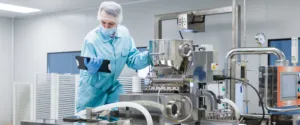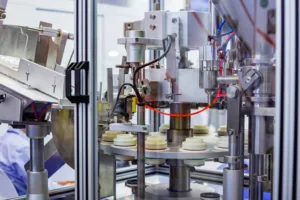Industrial motors are the beating hearts of factories, powering everything from conveyor belts to complex machinery. As the demand for efficiency, sustainability, and automation increases, so too does the need for advancements in motor technology. This article explores recent breakthroughs in both air and electric motor technology, shaping the future of industrial automation.
Air Motors: Embracing Efficiency and Cleanliness
While air motors have long been valued for their safety in flammable environments and their ability to handle harsh conditions, energy efficiency has been a historical concern. Recent advancements are addressing this:
- Variable Speed Drives (VSDs): These intelligent controllers optimize air pressure based on real-time load demands. This significantly reduces compressed air consumption, leading to substantial energy savings.
- Oil-Free Air Motors: Traditional air motors rely on lubrication, which can introduce contamination risks in certain applications. New oil-free designs utilize advanced materials and coatings to minimize friction and wear, eliminating contamination concerns while maintaining performance.
- Regenerative Air Motors: These innovative motors capture kinetic energy during deceleration and convert it back into compressed air. This captured energy can be reused in the system, further improving overall efficiency.
Electric Motors: A Focus on Power Density and Control
Electric motors dominate the industrial landscape due to their efficiency and versatility. Recent advancements are pushing the boundaries of what’s possible:
- Permanent Magnet Synchronous Motors (PMSMs): These motors utilize high-strength permanent magnets to generate a powerful magnetic field, leading to higher power density compared to traditional induction motors. This allows for a more compact motor design for the same power output, saving valuable space and weight.
- Switched Reluctance Motors (SRMs): These innovative motors operate without permanent magnets, relying solely on the shape of their rotor and stator to generate torque. This eliminates concerns over rare earth metal availability and cost, while offering high efficiency and robustness.
- Integrated Drive Systems (IDS): These combine the motor with its control electronics into a single unit. This simplifies system design, improves communication between motor and controller, and allows for real-time optimization of motor performance.
Emerging Technologies: A Glimpse into the Future
Beyond these concrete advancements, researchers are exploring revolutionary concepts that could redefine industrial motor technology:
- High-Temperature Superconducting Motors: These motors utilize superconductors that offer near-zero electrical resistance at extremely low temperatures. This translates to potentially significant efficiency gains and reduced energy losses.
- Additive Manufacturing for Motor Design: 3D printing allows for the creation of complex motor geometries with improved cooling channels and lightweight structures. This can optimize performance and reduce material usage.
- Wireless Power Transfer for Motors: Eliminating wires for power delivery can simplify system design, improve flexibility, and reduce maintenance needs. Magnetic resonance technology shows promise in achieving this wireless power transfer for motors.
The Road Ahead: Choosing the Right Motor
The choice between air and electric motors depends on the specific application. Here are some key considerations:
- Environment: Air motors excel in flammable or dusty environments where electric motors pose safety risks.
- Power and Speed Requirements: Electric motors generally offer higher power density and better speed control at high speeds.
- Maintenance Needs: Air motors often require less frequent maintenance compared to electric motors.
- Total Cost of Ownership: While the initial cost of an air motor might be lower, consider the ongoing cost of compressed air generation and maintenance.
Advancements in air and electric motor technologies are revolutionizing industrial automation. From efficiency-focused air motors to powerful and compact electric motors, these innovations are paving the way for a more sustainable and productive future. By understanding the latest trends and carefully considering application needs, engineers can select the right motor technology to power their next industrial project.
For further insights and detailed technical information, consult the Pocket Guide to Air Motors by Atlas Copco or Contact us directly.


